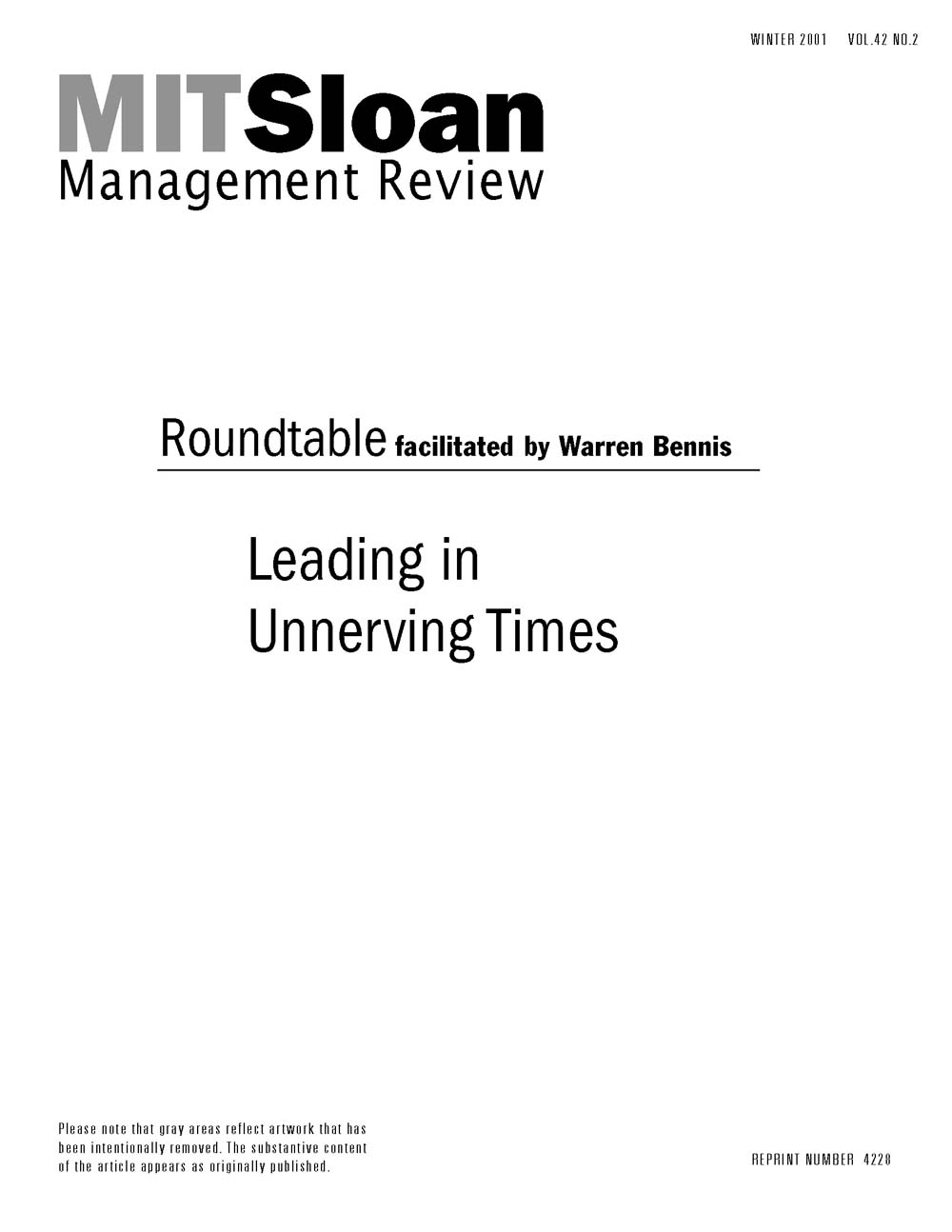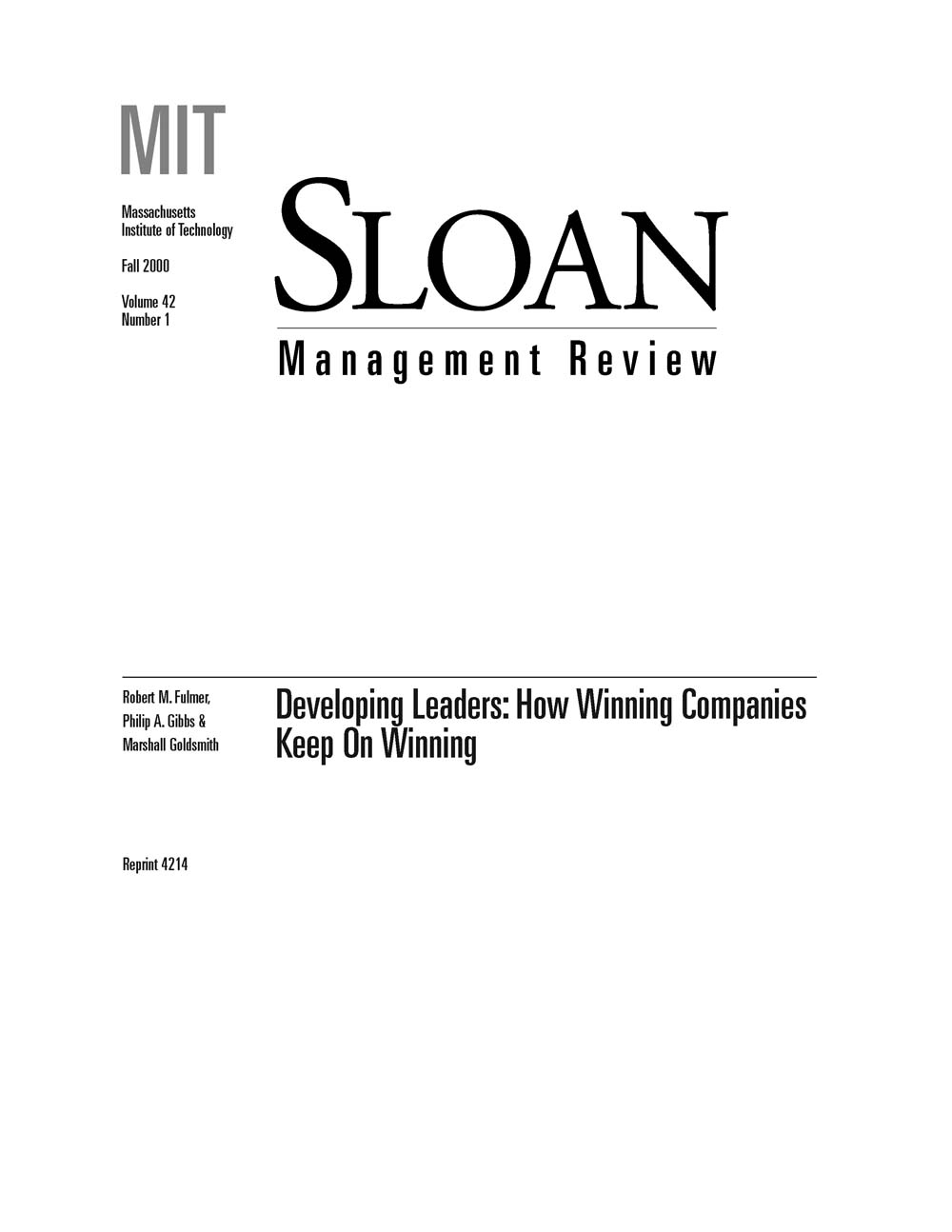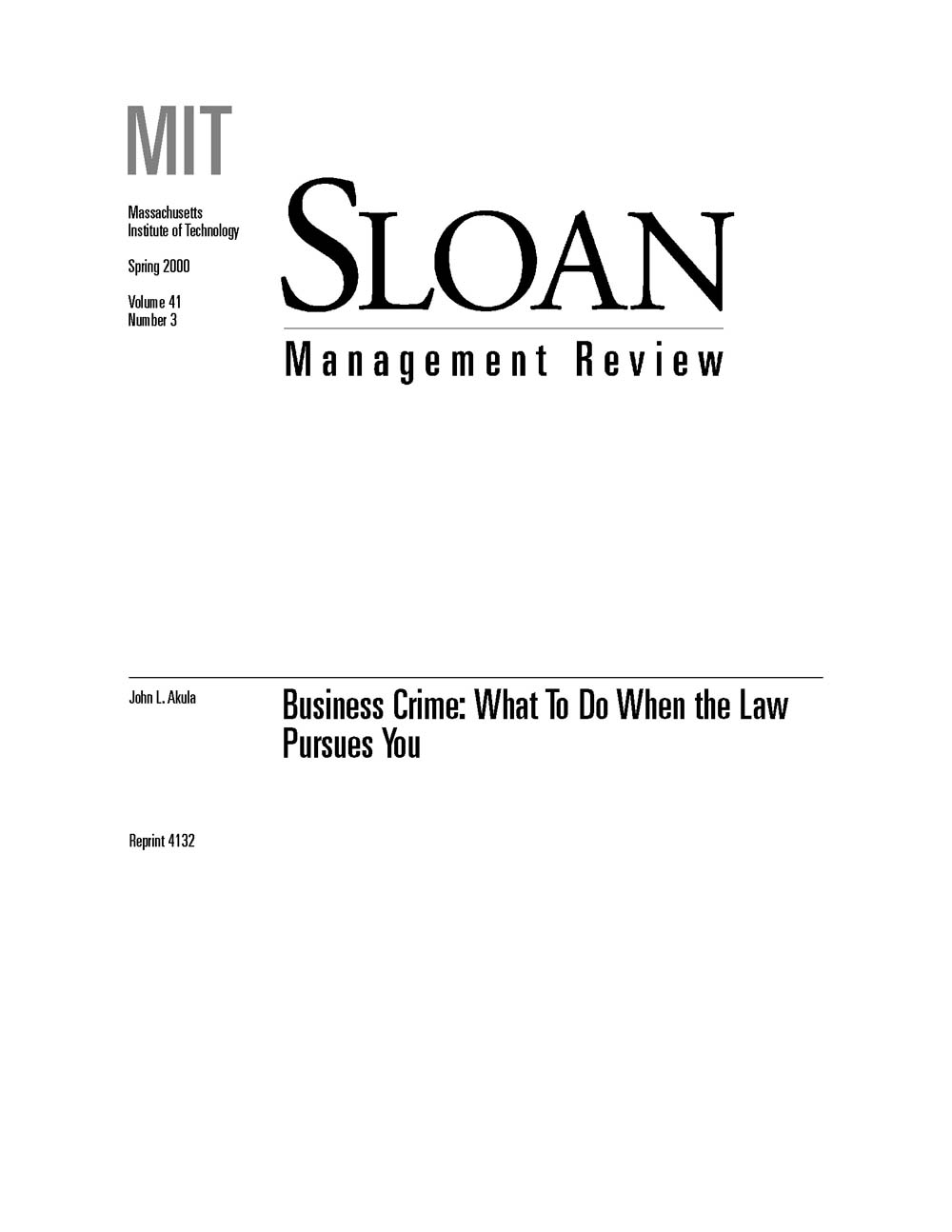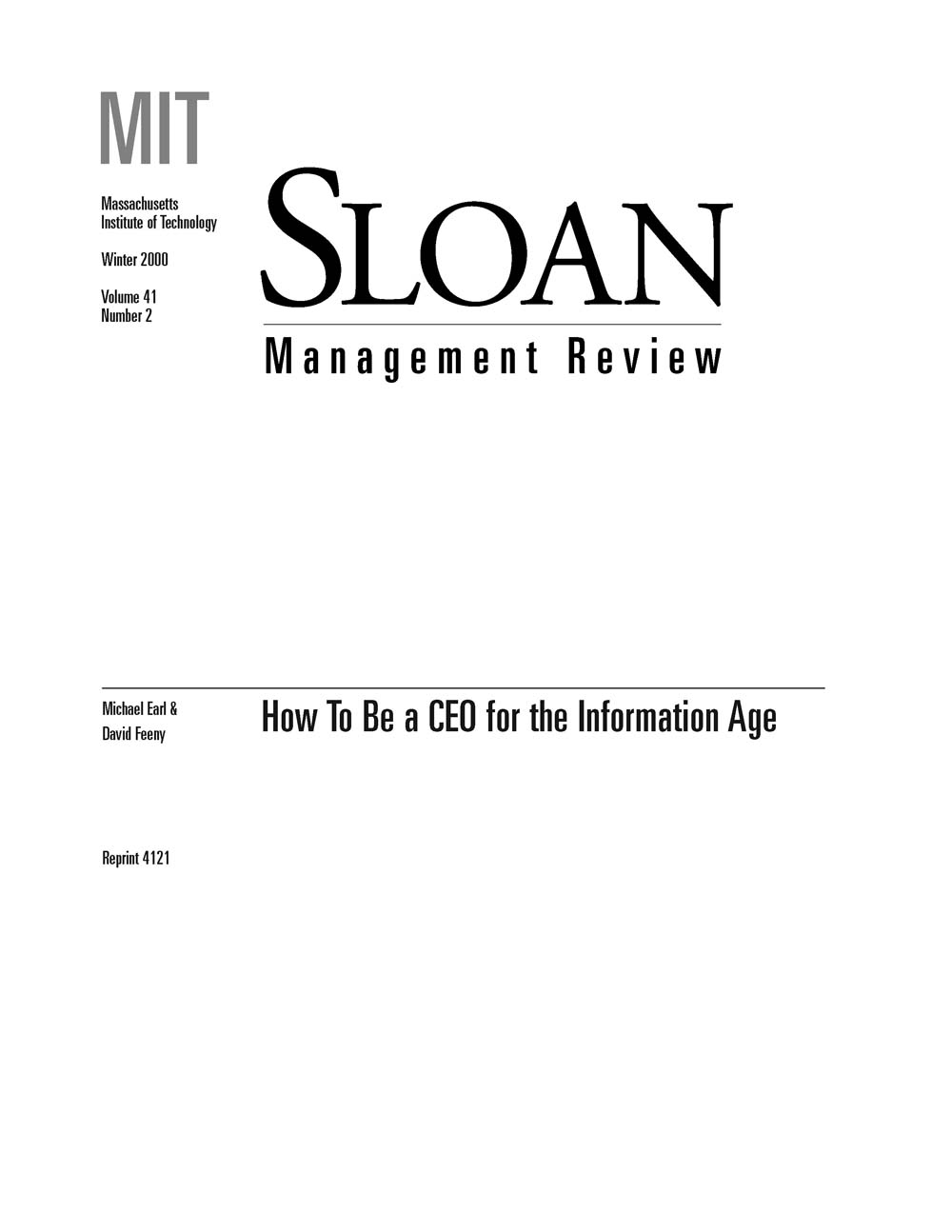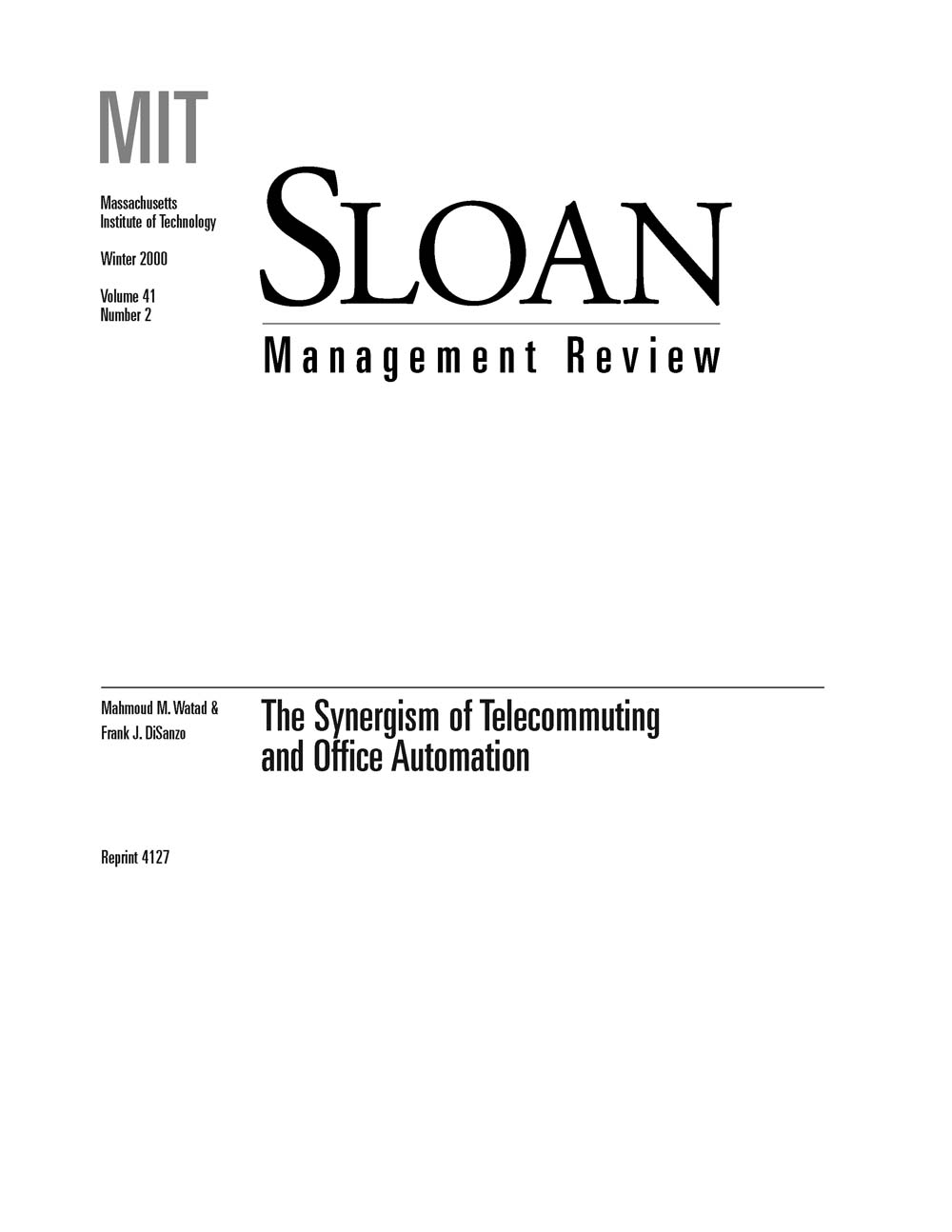Despite lip service paid to the idea that employees are a company’s greatest asset, too often they are sacrificed in the name of cutting costs and boosting efficiency. But that does not have to be the case. Intensive research by Boston Consulting Group’s Morten Hansen and Michael Deimler reveals that the Internet technology that brought us B2B and B2C is now bringing us B2E: business-to-employee management. By cultivating employees the way it cultivates customers, a company can develop a more satisfied, more productive work force, achieve greater productivity, cut costs and beat its competitors. Hansen and Deimler identify three components in a comprehensive B2E program: online business processes, online people management and online services to the company community. The mode of delivery is the integrated enterprise portal, which provides employees with the tools they need to access information and services at a single location. When business processes are moved online, both the company and its employees gain benefits springing from reduced interaction efforts. Flight crew at Delta Air Lines, for example, bid for shifts and receive their schedules online, which saves the company time and is more convenient for the employees. Online people management is driven by self-service and mass customization: Employees can manage their own training, tailor their own health-care packages and take care of introductory human-resources formalities online. Online community services are driven by the somewhat counterintuitive notion that allowing employees to accomplish certain personal business online at work will make them more productive. The online marketplace offered by Coca-Cola Co. is popular with employees and management alike. To design a successful enterprise portal, companies should follow the model of the online store: Supply features that customers (in this case, employees) want first, and then add features that the company wants the employees to use. Building a portal can be expensive, and it requires a high level of expertise, but the results can transform the company.
Leadership P. 12
Page 27 of 30
-
Leading in Unnerving Times
Warren Bennis and a panel of experts in leadership development discuss the “legitimization of doubt.”
-
Developing Leaders: How Winning Companies Keep On Winning
General Electric, Hewlett-Packard and Johnson Johnson keep a steady stream of leaders moving up by focusing on the five essentials of leadership development.
-
Business Crime: What To Do When the Law Pursues You
U.S. prosecutors are imposing giant fines and imprisoning managers when regulatory compliance problems arise. Know how to protect your company and yourself when a legal crisis hits.
-
How To Be a CEO for the Information Age
Today's vast array of web applications for supply-chain integration, salesforce automation, work group collaboration -- and the sale of everything from equities to automobiles -- makes it perfectly clear that information technology has evolved beyond the role of mere infrastructure in support of business strategy. In more and more industries today, IT is the business strategy. Unfortunately, many CEOs are ill-equipped to manage effectively in the Information Age. The problem has less to do with IT literacy than with a range of behaviors and attitudes that cause such CEOs to shirk their IT responsibilities. By their actions, many CEOs send negative signals about the role of information technology to other leaders in their organization who then repeat the behavior. Companies with such leaders frequently fail to reap business advantage from information technology. The authors describe seven types of CEOs, their behaviors and attitudes toward IT, and explain why all but one are decidedly unfit to lead companies in the Information Age. Only the "believer CEO" is ready to play a constructive role in his or her company's use of information technology. Believers understand that IT enables strategic advantage and demonstrate such beliefs in their daily actions. Believers are involved in IT decision making and are proactive in addressing IT problems and opportunities. They seek advice from a variety of sources, study the IT strategies of competitors, and set examples for others managers in their company to follow. The authors provide many examples of believer CEOs -- John Browne of British Petroleum, Ralph Larsen of Johnson & ; Johnson, Jack Welch of General Electric, Toshifumi Suzuki of Seven-Eleven Japan, and Ian Robertson of Land Rover, among others. They describe how each infused his organization with a positive attitude toward IT and contrast their actions and beliefs with those of the six failing archetypes. They explain how these believer CEOs played a critical role in their corporate IT strategies, how they crafted IT-savvy organizational cultures, and how these actions benefited their businesses. Realizing that many CEOs will see their current attitudes reflected in those of the six failing archetypes, the authors prescribe a variety of methods for leaders to address their shortcomings and master the techniques of believers.
-
The Synergism of Telecommuting and Office Automation
A company's sales workforce must be able to present their products and services using state-of-the-art personal computer technology. To communicate effectively with the company's main office, a salesforce working in the field must also be able to collect and transmit order data from remote locations. The authors studied how a company combined salesforce automation with a telecommuting program to create two new business strategies designed to improve organizational performance. The authors not only describe a successful "telework" program, but they also provide a framework for conducting a cost/benefit analysis. They conclude that the start-up cost of the telework program was high because the IT infrastructure was not current; however, the direct costs and savings offset each other within 3 to 4 years. In addition, they report that ongoing costs declined rapidly, depending on the number of new teleworkers joining the organization. The telework program enhanced accountability because the new software applications allowed managers greater oversight of employee activities. Productivity also increased. After learning how to increase the speed and accuracy of internal operations, the salesforce spent more time with customers and generated more sales. By integrating0 technology into business processes, the telecommuting program also spurred organizational adjustments and cultural change. Gradually, business managers adjusted policies and procedures to conform to the program's technical and business needs. They shifted from managing by attendance to managing by results, which depended on a reliable IT infrastructure and technical tools for communicating with their employees. The telework program quickened the pace of IT adoption at this company by linking IT improvements to the organization's mission and survival. This mobilized the salesforce, the information systems staff, and middle managers to adapt to and accept the new business environment.
-
Transforming Internal Governance: The Challenge for Multinationals
Competitive discontinuities demand changes in how diversified multinational corporations create wealth. While executives agree that changes in the last decade are qualitatively different from those in the past, many fail to take action or they apply old solutions, such as cost cutting, to new problems. The challenge for companies is to move from the zone of comfort -- the familiar -- to the zone of opportunity -- the unfamiliar. Sources of discontinuity include more powerful, better informed consumers; the breakup of traditional channel structures; deregulation, privatization, and globalization; the convergence of traditional and new technologies; changing competitive boundaries; the evolution to new standards; shorter product life cycles; and the greater involvement of business in ecological and social issues. In this environment, managers must develop new capabilities. They need to think and act globally, regionally, and locally; adapt to a different pace and rhythm in all aspects of a firm's activities; integrate new technological knowledge with old and reconfigure that knowledge into new business opportunities; develop consensus-building skills; form alliances; and allocate resources under conditions of ambiguity. At the same time, they must ensure the profitability of current business. The obstacles to transformation are formidable. Many senior managers have little knowledge of, or experience with, alternate models of managing and responding to new customer expectations. They seek administrative clarity at the expense of strategic clarity and sometimes lack the stamina needed to sustain high performance. Transformation requires interrelated systemwide changes. The effort must be driven by a new concept of opportunity and involve the entire organization. The first step is to create a transformation agenda to mobilize the organization. Managers must then fight inertia, align the organization with the new direction, undertake projects that provide the basis for experimenting and learning, and evaluate failure and success. Innovations in how firms manage must precede innovations in how they compete and create wealth.
-
Strategies to Turn Adversity into Profits
Despite a downturn in the U.S. semiconductor industry in the 1980s, Intel, Micron Technology, and Texas Instruments exploited innovative technology and unique capabilities to shape their local environments and maintain their competitiveness. They employed combinations of the following generic strategies: 1. Blocking. A firm prevents others from imitating its innovation. Tactics include defending intellectual property in the courts and establishing a reputation for retaliating against new market entrants. 2. Running. Whereas blocking may give competitors time to catch up or leapfrog the innovator, running ensures that the innovator stays ahead by introducing new products, even if by "cannibalizing" its own products. 3. Teaming up. The opposite of blocking, teaming up encourages collaborative entry into markets to improve the chances of establishing an industry standard or dominant design. These strategies intertwine with a firm's competencies and endowments (brand name, patents, distribution channels), its national environment (enactment and enforcement of laws to protect copyrights, patents, trade secrets), and the nature of the technology underpinning a firm's innovation. Intel strategically allied itself with other companies, defended its intellectual property, speedily developed newer generations of microprocessor, and enhanced brand recognition with its "Intel Inside" advertising campaign. Unable to out-manufacture its Japanese rivals, Micron focused on its advanced design capabilities and successfully filed suit against six Japanese chipmakers for dumping below-cost chips on the U.S. market. Its success set the stage for the establishment of Sematech, a consortium funded by member firms and the U.S. government to build a local environment conducive to semiconductor manufacturing and related industries. Texas Instruments vigorously protected its voluminous patent portfolio, collecting royalties that exceeded operating income for a seven-year period. The firm also negotiated cross-licensing agreements and alliances to obtain manufacturing capabilities in Japan. Strategic corporate decisions in defense of profits work in tandem with national environment to ensure industry well-being.





